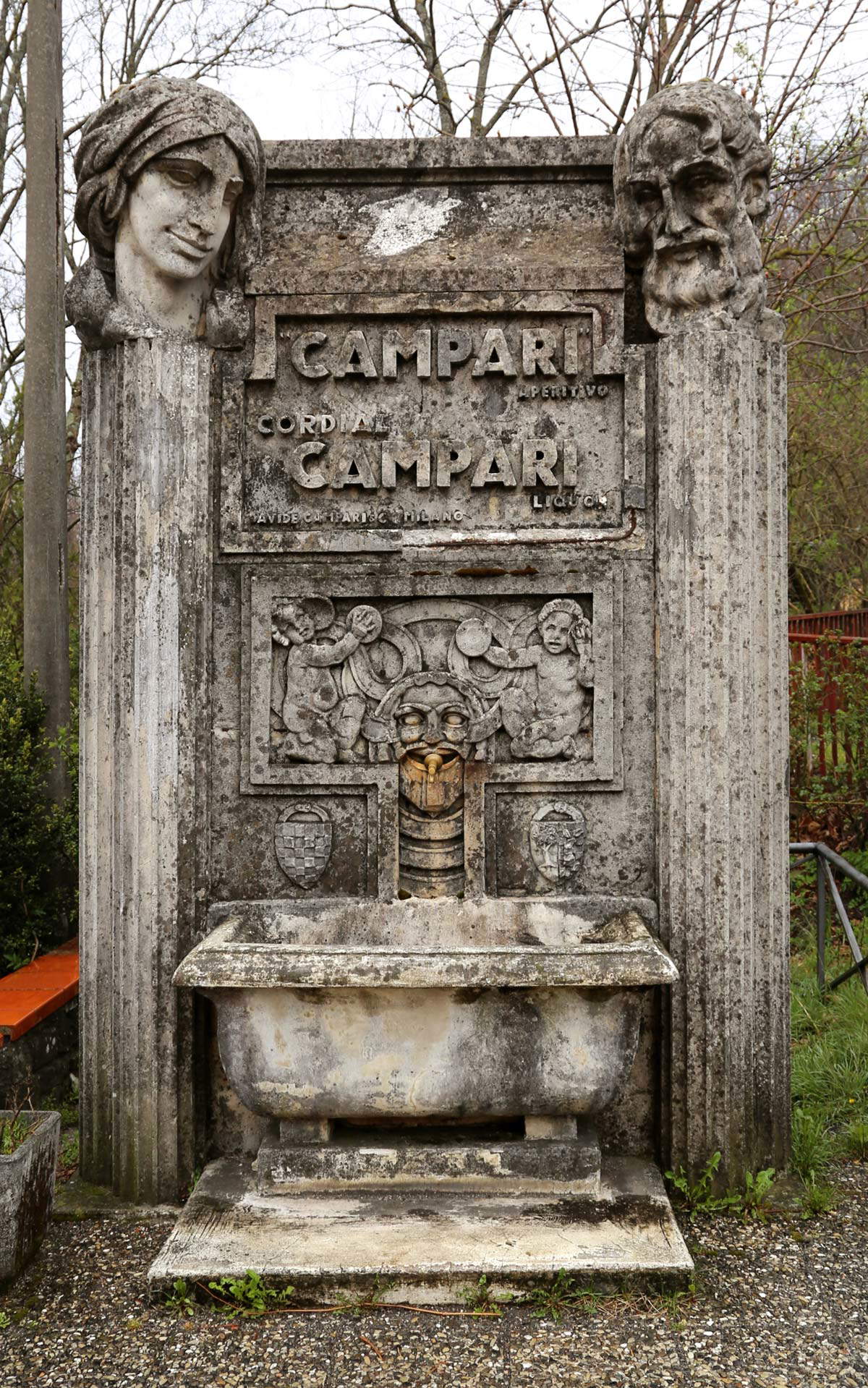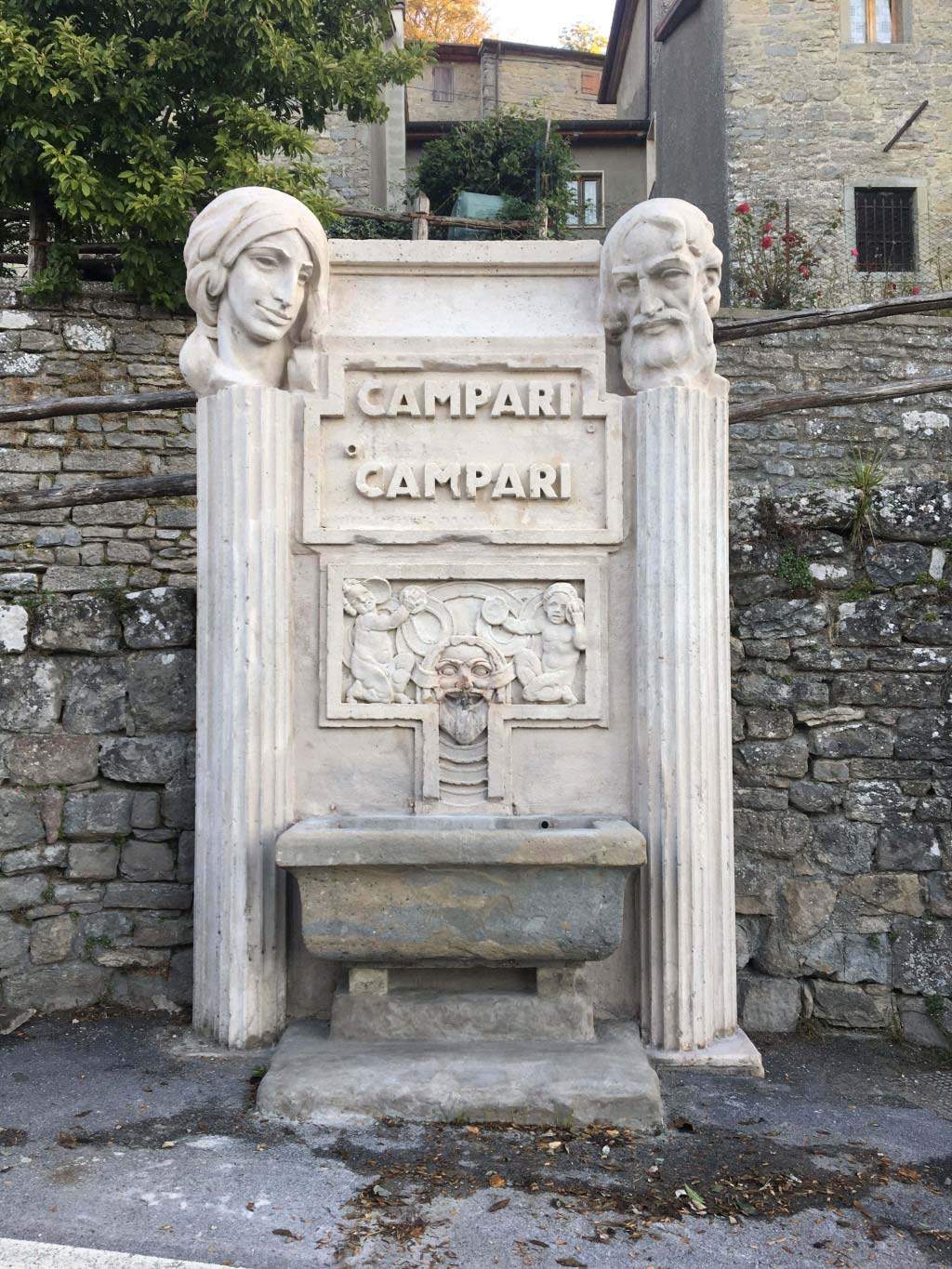"A Campari?" How many people will have heard this phrase in the more than 160-year history of Campari, the company founded by Gaspare Campari (Cassolnovo, 1828 - Milan, 1882) who in 1860 in Novara created the drink known worldwide and used for countless cocktails. A surname that has since become of common meaning to identify the aperitif. A company that over the years has been able to grasp inart the power of communication by going to choices, from Fortunato Depero ’s bottle design to very innovative advertisements, that have always set trends. The bottle of Campari Soda, the single-serving aperitif created in 1932, for example, bears Depero’s inimitable futurist design, but equally unique is a perhaps lesser-known story: the decision in the 1930s to create a series of fountains in travertine by entrusting the project to a renowned sculptor. These were small fountains from which water was supposed to flow (of course!), but they had to be artistically appreciable and have the name of the house of the celebrated bitter appear.
The project was entrusted to the Florentine sculptor Giuseppe Gronchi (Florence, 1882 - 1944), who made them in the deco style, in line with the aesthetic canons of the time, with bas-reliefs featuring various allegorical elements framed between two columns topped by two heads: one male and one female. The spigots sticking out pour water into a basin. Scholar Cristina Sirigatti, in her entry in the Treccani Encyclopedia’s Biographical Dictionary of Italians dedicated to Gronchi, states is that he was an eclectic sculptor and that “while revealing a constant penchant for elegant dé figuresco, he appears ready to juxtapose them, from time to time, with iconographic suggestions still linked to symbolism, or with echoes of the vigorous archaizing plastic of Antoine Bourdelle, or with the interpretation that Angelo Zanelli offered of the antique in the altar of the Patria in Rome, or, finally, with the terse and relaxed modeling, and even with certain iconographic inventions, of Antonio Maraini, whom Gronchi met on the building site of the Savoy theater.”
These are characteristics that Gronchi poured into the Campari Fountains. Unfortunately, however, of the twelve historically attested and located between 1931 and 1937 in Tuscany and Lombardy, only three remain today: one in Brunate, in the province of Como, one in Chiusi della Verna and one in the municipality of Pistoia, in Le Piastre (the others were located in Abetone, Barberino Val d’Elsa, Bormio, Cortona, Firenzuola, Montepiano, San Gimignano, Santa Lucia and Taviano). All are hilly and mountainous areas from which fresh spring water flows. According to Sirigatti, the Fountains are stylistically reminiscent of the Viennese Secession, especially “in the two large heads that surmount the concrete mirroring; but the putti musicanti above the basin, re-propose, in style and invention, those of the decorative reliefs made by the artist, about ten years later, for the Savoy Theater.”




The first fountain to be installed, as a pilot project on November 1, 1931 to publicize the company, which in the meantime had passed from Gaspare to his son Davide Campari (Milan, 1867 - San Remo, 1936), was the one in Chiusi della Verna: it has been defined over the years as a kind of advertising poster in three dimensions, but also one of the first cases in the history of territorial marketing, as well as a work that responded to two essential functions of the community, namely to spread art in the area and to guarantee the population of this mountainous area of Tuscany a public utility service. The fountain in Chiusi, moreover, was restored in 2018, while the one in Pistoia underwent a major restoration in turn in 2022 thanks to resources made available by Publiacqua, the Tuscan water company. “Certainly, at the moment, it is the most faithful,” pointed out Lorenzo Perra, president of Publiacqua, “and it maintains all the historical and architectural value of the original work. Now we can observe it a bit as it was, but we intend to make further improvements, such as taking care of the lighting. It is important to remember that we are moving through the Art bonus tool, so we are taking advantage of a tax benefit to restore historic water-related artifacts that are present in our area.”
“The work was 70 percent cleaning of the artifact,” explained Michele Rotella, who performed the restoration together with Simone Antonetti. “Three levels of manual cleaning and prevention from attacks by microorganisms. After that, a conservative restoration was done, with mechanical action, to intervene on the missing parts without interfering too much on the original reading of the work.” We are thus faced with an example of art lent to publicity to give it maximum fulfillment by exploiting the effect of public utility, such as that of water, a primary good par excellence.
Warning: the translation into English of the original Italian article was created using automatic tools. We undertake to review all articles, but we do not guarantee the total absence of inaccuracies in the translation due to the program. You can find the original by clicking on the ITA button. If you find any mistake,please contact us.